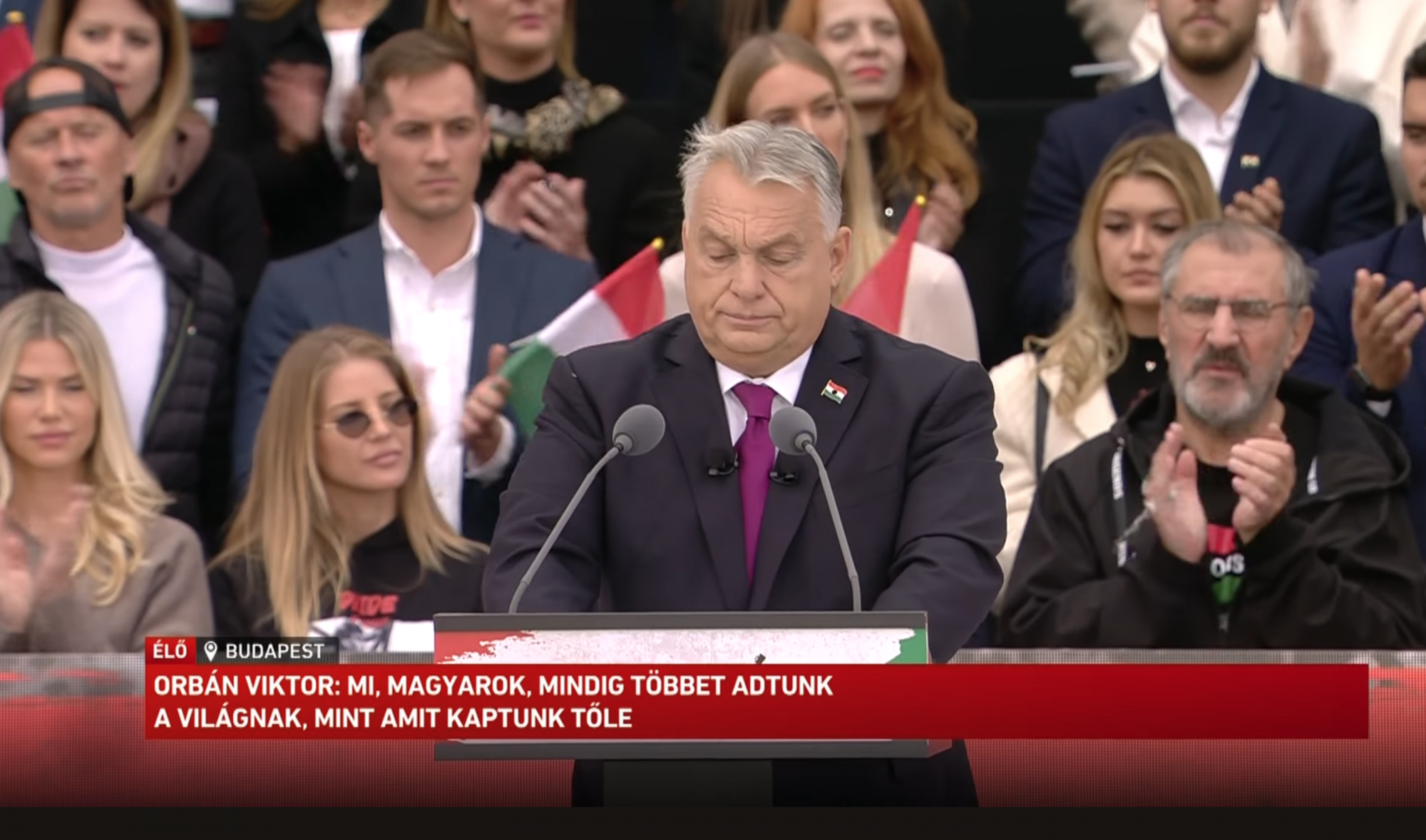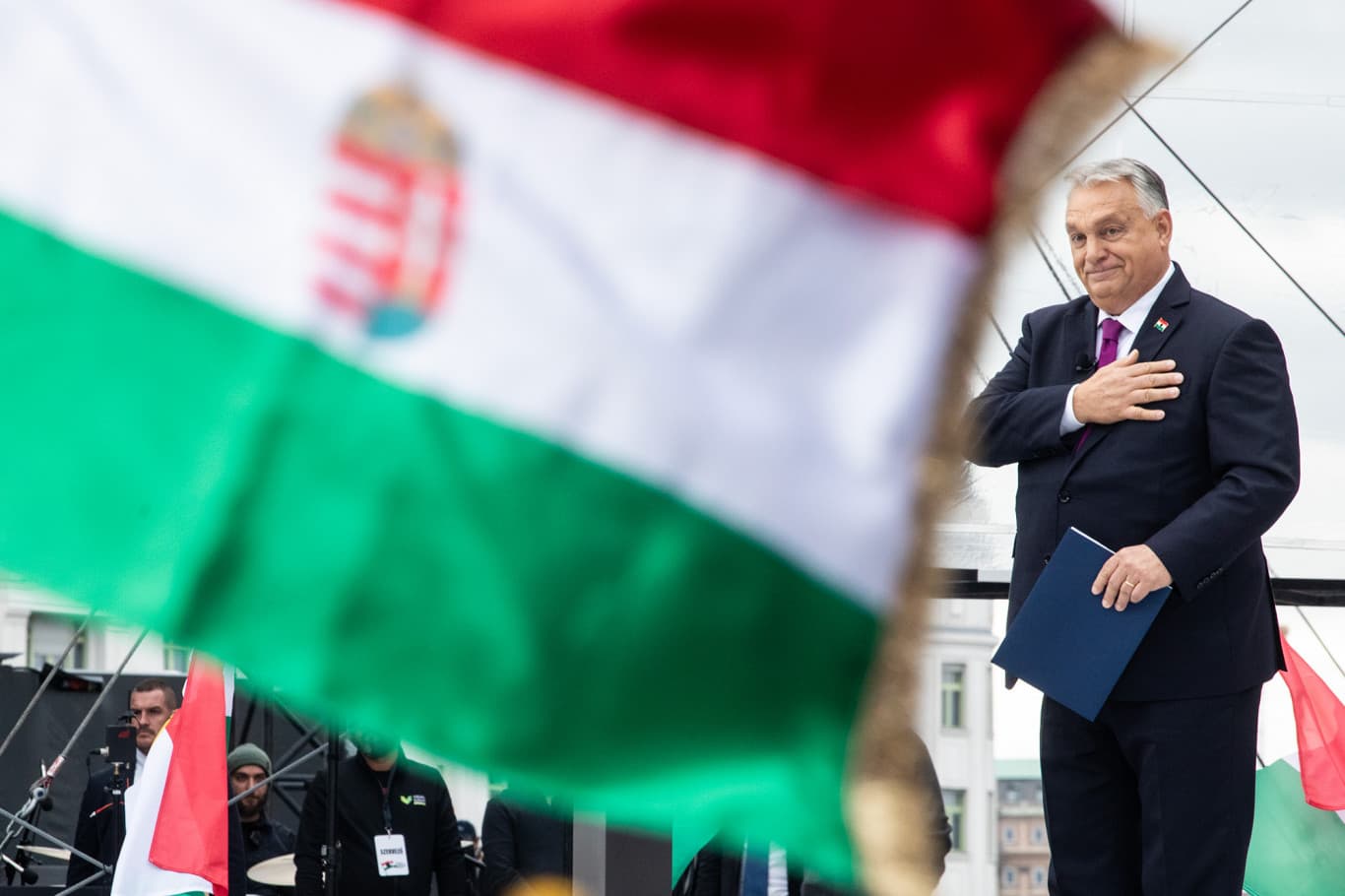The stage setting of Viktor Orbán’s speech on October 23 was even more expressive than the spoken text. The directors seated the luxurious wife Vivien Vasvári and the actress-influencer Zsófi Szabó in the row behind the prime minister, and the camera showed them most often next to the speaker. Next to them was Károly Eperjes, who was intensely focused, cheering, and grimacing throughout. No Fidesz politician was allowed to sit close to the prime minister, instead they were replaced by lesser-known artists and celebrities Enikő Muri, Krisztián Szelba “Cooky”, and mostly young adults or adults trying to look like them (for example, in the upper left corner of our picture, Béla “Kiki” Patkó [68], wearing a backwards beige baseball cap).

Vasvári and Szabó also played an important role in promoting the Peace March. They are perhaps the newest faces in the Orbán camp, having only emerged as public figures a few weeks ago; previously, they were only seen in tabloids or on reality shows.
I walked with the march from Margaret Bridge to Nyugati Square, and the majority were not Zsófi Szabó's age group. This is obviously nothing new: Orbán's most dedicated supporters are over 40. This event also showed that the ruling party is trying to overcome its increasingly worrying disadvantage among younger generations.

